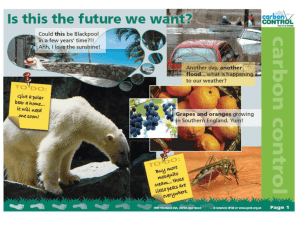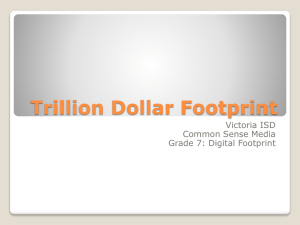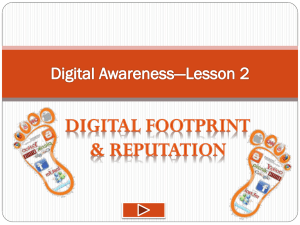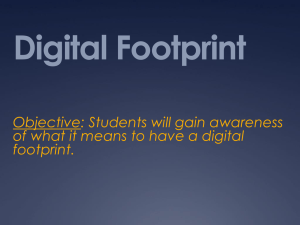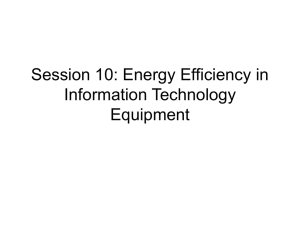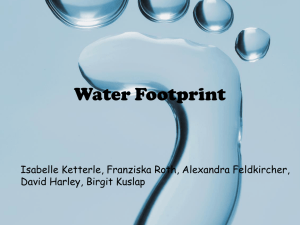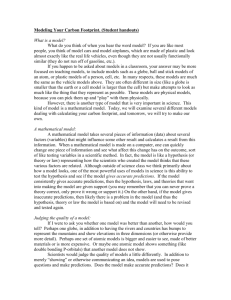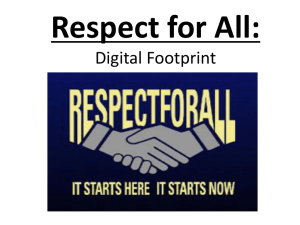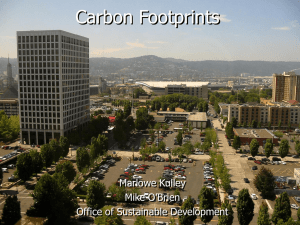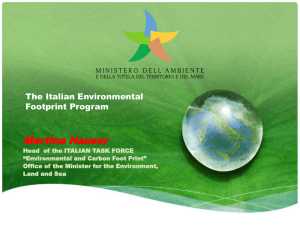Powerpoint to be used during experiment/presentation - Georgia 4-H
advertisement
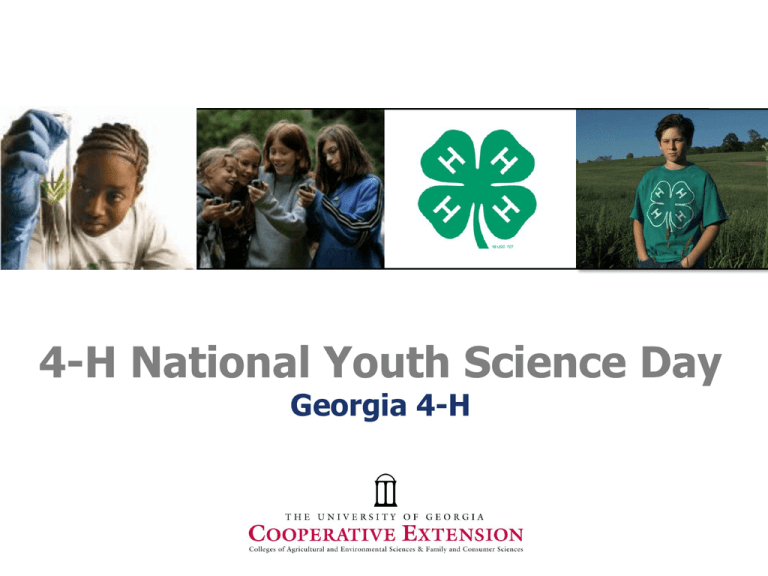
4-H National Youth Science Day Georgia 4-H Is Climate Change Real???? Is Climate Change Real??? Increases in CO2, Methane, and Nitrous Oxide in the atmosphere are related to increases in temperature. Greenhouse Gas • Gases in the atmosphere that trap heat and warm the earth • CO2-produced by burning fossil fuels and other waste • Methane-produced during production of oil, coal, and natural gas. Also produced by landfills. • Nitrous Oxide-produced by farming and factory practices • Flourinated gases-produced by some factories 4 Effects of Climate Change • Increasing temperatures • More droughts • More major events: large storms, long periods of drought, long periods of rain, more runoff • More hurricanes and larger hurricanes • Less water available (mostly due to population growth) • More coastal land will be covered by ocean What About our Water?? • Increasing temperatures, carbon dioxide emissions, and run-off are affecting the quality of our water • Higher water temperatures affect plants and animals that live in our waters Carbon Dioxide is absorbed by the ocean and forms carbonic acid. Some CO2 is used by organisms during photosynthesis but some remains in the water High levels of CO2 in the water causes it to become more acidic Run-off can carry dangerous contaminants that can pollute our waters and kill the organisms that live there • • • What does Carbonic Acid do to our Oceans? • Reef-building corals cannot produce their skeletons as fast • Marine algae and zooplankton cannot maintain their protective shells • Young marine animals are less likely to survive to become adults 7 The Experiment: Materials •Straws •Plastic cups •Plastic bags •0.04% Bromothymol Blue •Plastic wrap •Effervescent antacid tablets •Eyedropper •Water 8 The Experiment: SAFETY Bromothymol blue is a chemical solution that detects if something is acid or basic • • Do not get the liquid in your mouth Do not get the liquid in your eyes 9 The Experiment: Part 1 • • • • • Add water to cup Add 1 dropper full of BTB Insert straw then cover cup with plastic wrap SLOWLY blow bubbles Repeat with multiple straws/blowers in one cup 10 The Experiment: Part 1 What do you think caused the liquid to turn yellow? Why did it turn yellow faster when more people were blowing in the cup? What would happen if we let the cup sit overnight? BEFORE AFTER 11 The Experiment: Part 2 • Fill cup half full of water and pour into baggie • Seal except for one small portion and press out as much air as possible • Add ½ tablet, seal, shake 3 seconds, and observe • Using new bag & water, repeat with 1 tablet • Using new bag & water, repeat with 2 tablets 12 The Experiment: Part 2 13 The Experiment: Part 2 14 The Experiment: Part 2 • Fill a new cup ½ full of water • Add 2 droppers full of BTB • Add ½ tablet to cup WHAT DO YOU THINK WILL HAPPEN? WHAT DO YOU THINK WILL HAPPEN IF WE ADD SODA TO THE CUP? 15 The Experiment: Part 2 16 What can we do to reduce CO2 in the air? • Drive less, carpool, walk, ride bike • Drive hybrid cars that are more energy efficient • Use compact fluorescent light bulbs • Recycle and use recycled products (they take less carbon to make) • Plant trees—they convert CO2 into oxygen • Turn up the air conditioning and turn down the heat • Use less water • Buy local food 17 What’s Your Carbon Footprint? • What is a Carbon Footprint? • The amount of greenhouse gases produced during our daily activities • Our carbon footprint is determined by: • The actual gases we produce each day by driving, heating/cooling our homes, using electricity, etc. • Items we use also affect our carbon footprint For example: carbon was produced in the making of your clothes and carbon will be produced as they are breaking down after you throw them away. The more we buy, the more emissions are produced!!!! 18 Calculating Your Carbon Footprint 1 1000 18 14666 19 Calculating Your Carbon Footprint 1 1000 33 8000 20 Calculating Your Carbon Footprint 0 0 0 0 21 Calculating Your Carbon Footprint 700 630 22 Calculating Your Carbon Footprint 750 13,500 23 Calculating Your Carbon Footprint 60 7920 24 Calculating Your Carbon Footprint 0 0 0 25 Calculating Your Carbon Footprint Add up all of the boxes with a total The Carbon Footprint for the Green Family is 44,716 lbs/year What’s your Carbon Footprint?????? 26 Enter Your Carbon Footprint Online www.4-h.org/NYSD 2010 NYSD Results Gadget 27 Questions?
